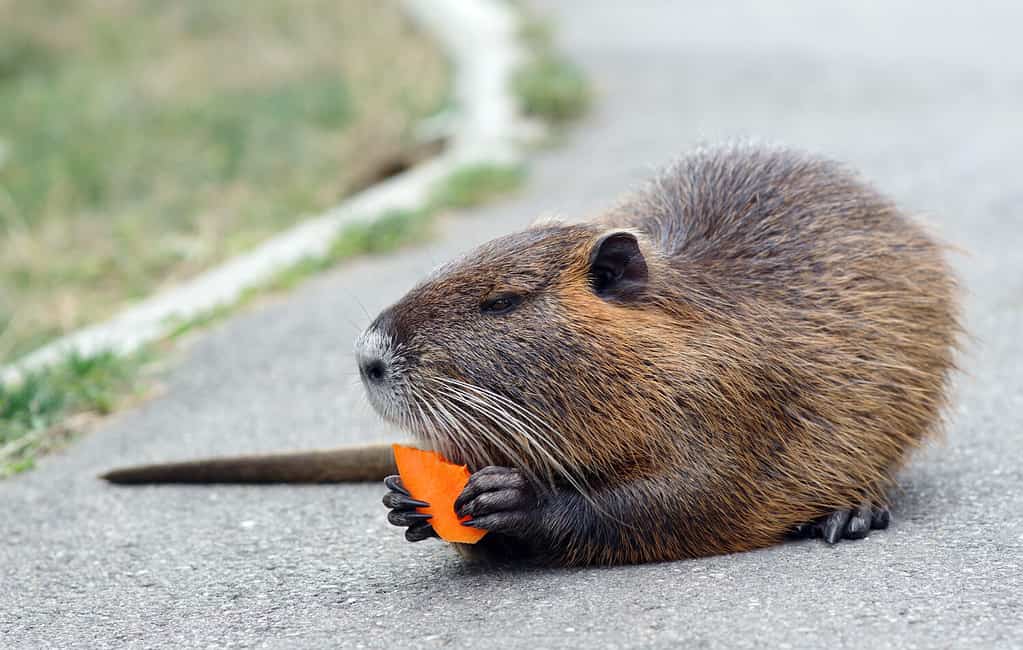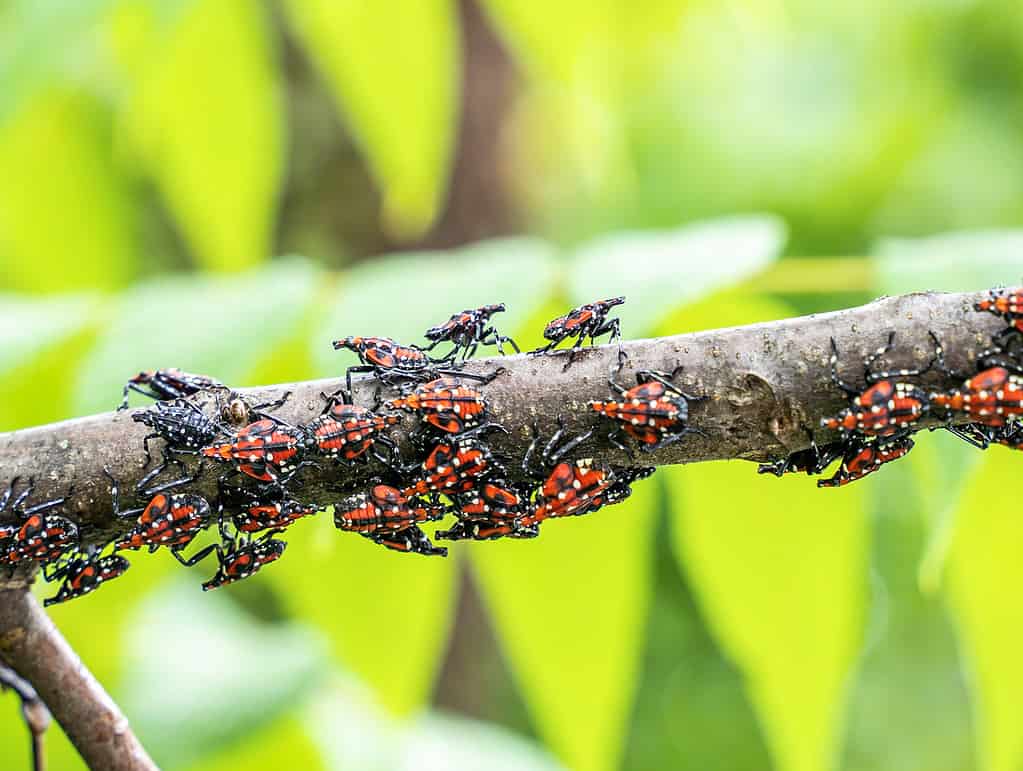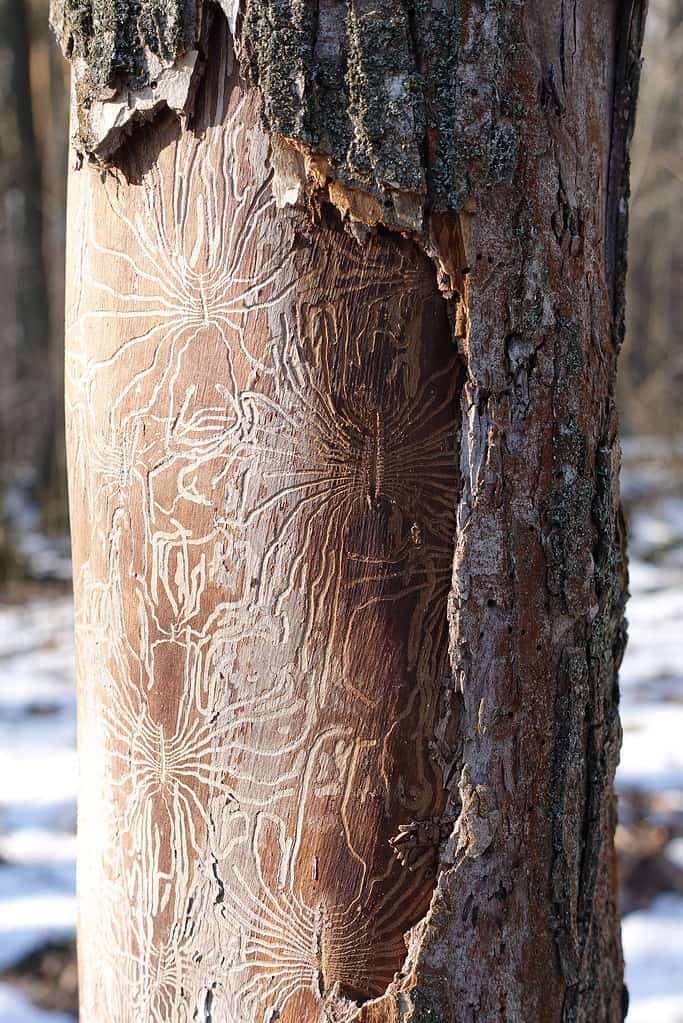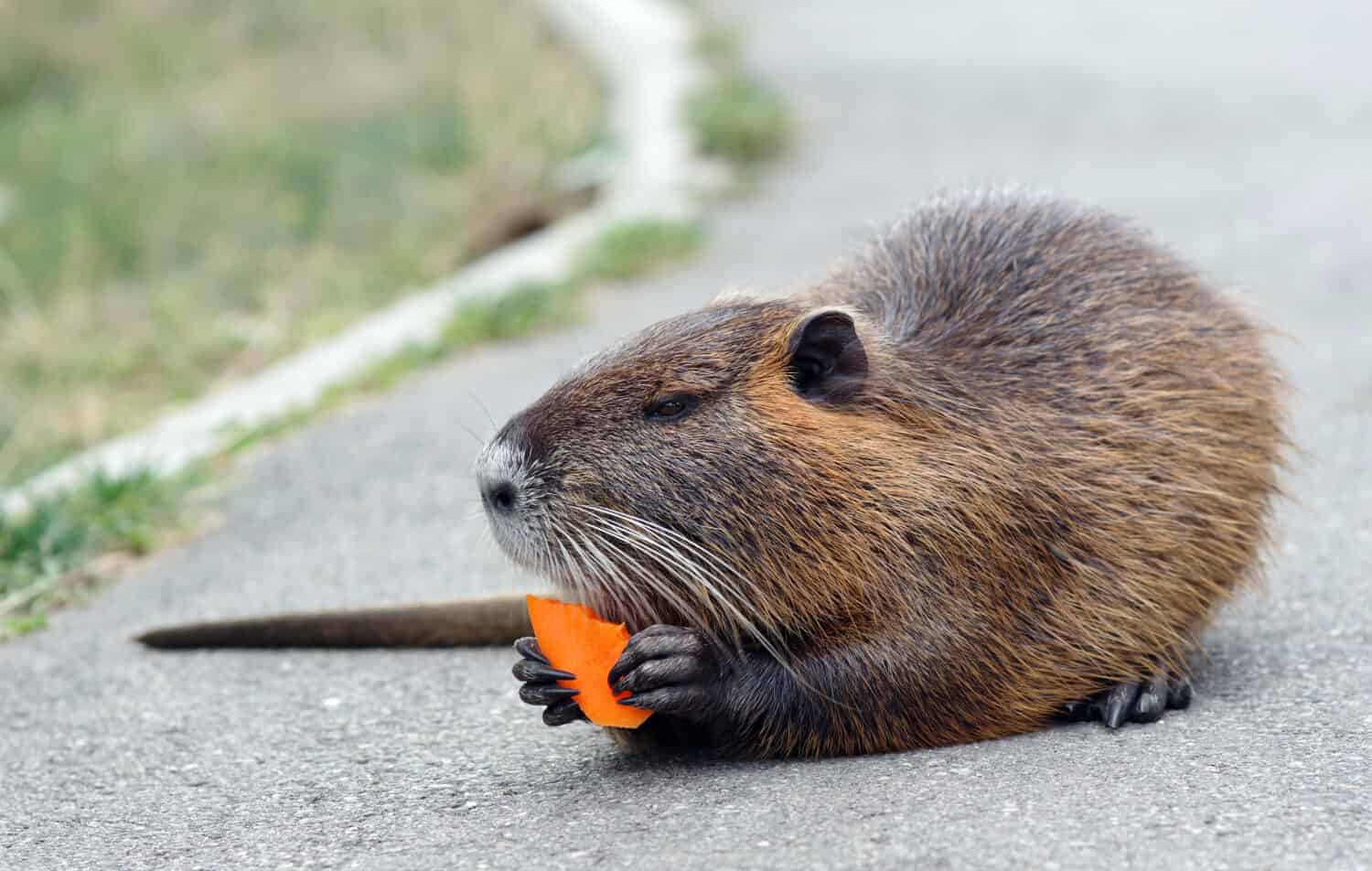Most countries are up to their ears in debt and do not need a reason to make their problems worse. If anything, it would be great if countries could focus on sustainable practices to help the environment and native wildlife around them. Instead, the recently released global scientific report by the UN Intergovernmental Science-Policy Platform on Biodiversity and Ecosystem Services, shares that most countries are spending billions on mending the situations invasive species are causing.
Lantern Flies, Nutria, Oh My!

Nutria have been in the US since the fur trade brought them here in 1889.
©KRIACHKO OLEKSII/Shutterstock.com
It’s not that the plant and animal invasive species are bad or wrong for living, it’s that they cause detrimental effects on the ecosystem they are in but do not belong in. Much of the time, being where they don’t belong has little to nothing to do with them and everything to do with humans.
For example, nutria would have never made it to the USA if we had not wanted to make money off them in the fur trade. After a hurricane hit Louisiana, the cages holding nutria were abandoned. They did what any species wanting to survive would do; they broke out. It’s hard to fault them, or any of the animals or plants that fall into the invasive category.
If something is not done to right the wrongs of generations before us, our ecosystem will be too depleted and damaged to aid in the survival of our national plants and animals. Such would create a collapse of all of the ecosystems in different countries, which is not what anyone wants.
Examples of Invasive Species

The spotted lantern fly is damaging to grape vines and the plant’s health.
©iStock.com/arlutz73
Cogongrass is an Asian plant that burns much faster than our native grasses. It arrived in the US as seeds in shipping pallets. This grass causes a huge risk to us because it accelerates wildfires, which is already a difficult issue the country faces.
Dutch elm disease is spread through elm bark beetles. It has slowly been spreading throughout the country since 1930 when it began in Ohio. Approximately 50% of the elm trees in the country have fallen victim to the disease.
Invasive carp is a catchall name for several species of carp, including black, bighead, silver, and grass carp from Southeast Asia. These invasive carp were brought into the US to filter pond water in fish farms. Flooding caused some to escape into local waterways and they quickly reproduced. They eat 20% of their body weight every day, which is a huge problem. They are now in waterways eating all of the food before our native fish have a chance. It is alarming since they are quickly moving closer to the Great Lakes, which is the climate they flourish.
Water hyacinth is a beautiful South American aquatic plant that densely covers pools of water. It’s meant to be ornamental in garden ponds. It has since moved into the wild waterways. This creates severe issues for native aquatic plants and wildlife because of how densely they grow. It blocks out sunlight which kills native plants, aquatic insects, and animals.
What Next?

The elm bark beetle has killed 50% of the elm trees in the US.
©LegART/iStock via Getty Images
It is important to be extremely careful to not introduce non-native plants or animals into the US. This also goes for exotic pets, plants, and seeds. Currently, 60% of extinction is due to invasive species. If this continues to grow in severity, the country will lose many more in the coming years. Researchers declared the cost of the worldwide invasive species issue to be over 423 billion dollars. Surely, there is something better the money could be used for if the battle on invasive species wasn’t ongoing.
Thank you for reading! Have some feedback for us? Contact the AZ Animals editorial team.








